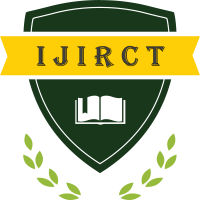Reinforcement Learning in Robotics: Exploring Sim-to-Real Transfer, Imitation Learning, and Transfer Learning Techniques
Author(s): Ruchik Kashyapkumar Thaker
Publication #: 2410076
Date of Publication: 17.10.2024
Country: Canada
Pages: 1-7
Published In: Volume 10 Issue 5 October-2024
DOI: https://doi.org/10.5281/zenodo.14001716
Abstract
Reinforcement learning (RL) has recently emerged as a transformative approach in robotics, facilitating the development of intelligent systems capable of learning complex tasks through trial and error. This paper presents a comprehensive review of RL applications in robotics, emphasizing the critical challenge of sim-to-real transfer, which arises from the inherent differences between simulated environments and real-world scenarios. Due to the difficulties associated with gathering real-world data, including sample inefficiency and high costs, simulation environments serve as essential training grounds for robotic agents. However, the performance of these agents often degrades when policies are transferred to real robots, necessitating ongoing research to bridge this gap.
I explore various methods aimed at improving policy transfer, including domain randomization, domain adaptation, imitation learning, meta-learning, and knowledge distillation. By categorizing recent advancements and highlighting key application areas—such as air-based, underwater, and land-based robotics— I provide a structured overview of the current state of the field. Furthermore, I discuss significant opportunities and challenges associated with these methodologies and propose future research directions. As the robotics landscape evolves, leveraging AI to create fully autonomous systems that mimic human learning patterns remains a priority. This survey serves as a guiding resource for researchers seeking to advance the capabilities of robotic systems through RL, ultimately contributing to the development of more sophisticated, adaptable, and capable autonomous robots.
Keywords: Reinforcement Learning (RL), Sim-to-Real Transfer, Domain Randomization, Robotics, Imitation Learning, Intelligent Robots
Download/View Count: 276
Share this Article
